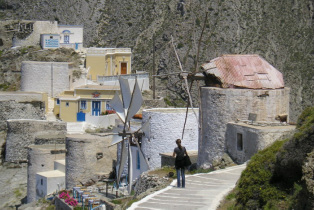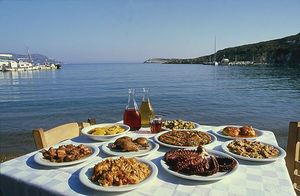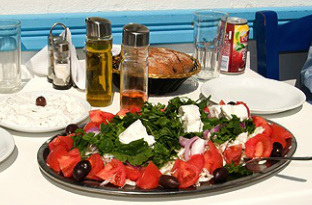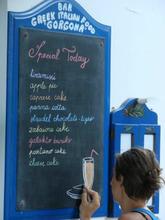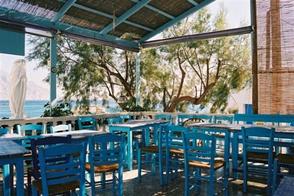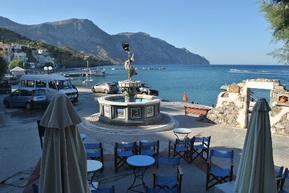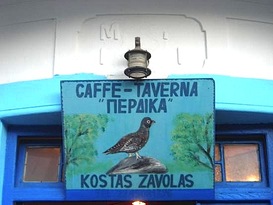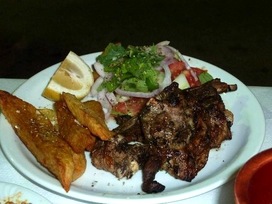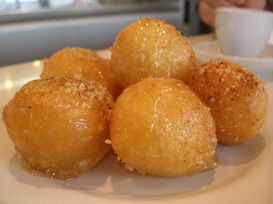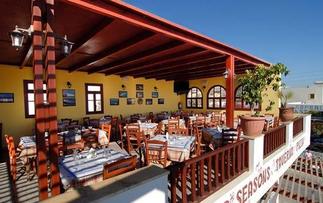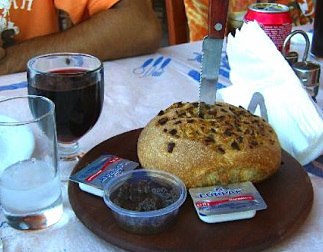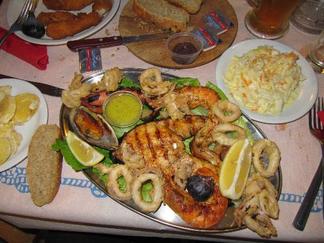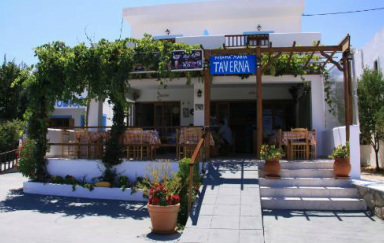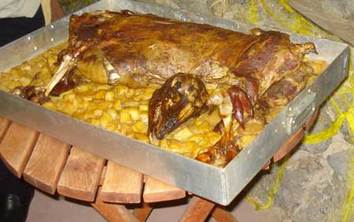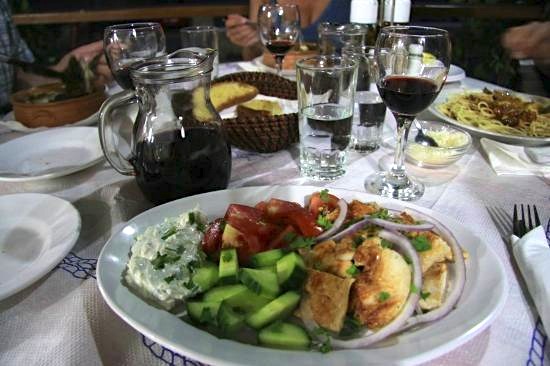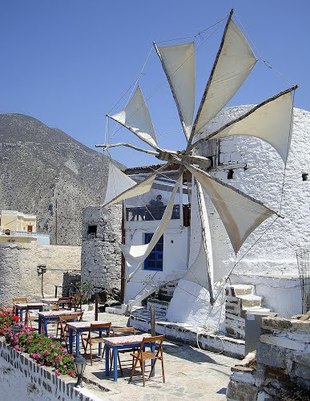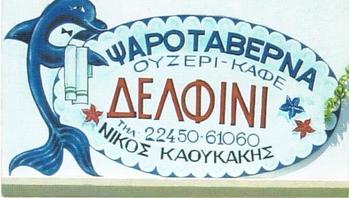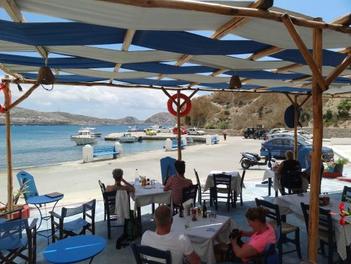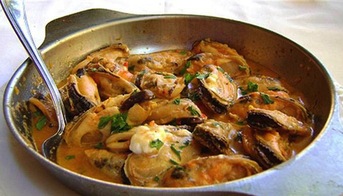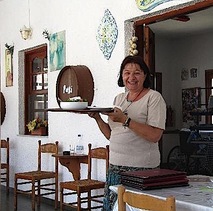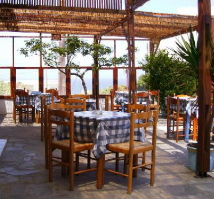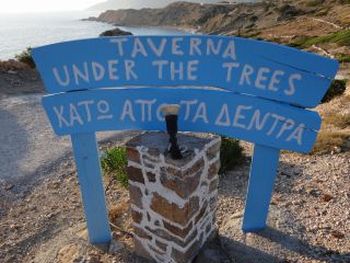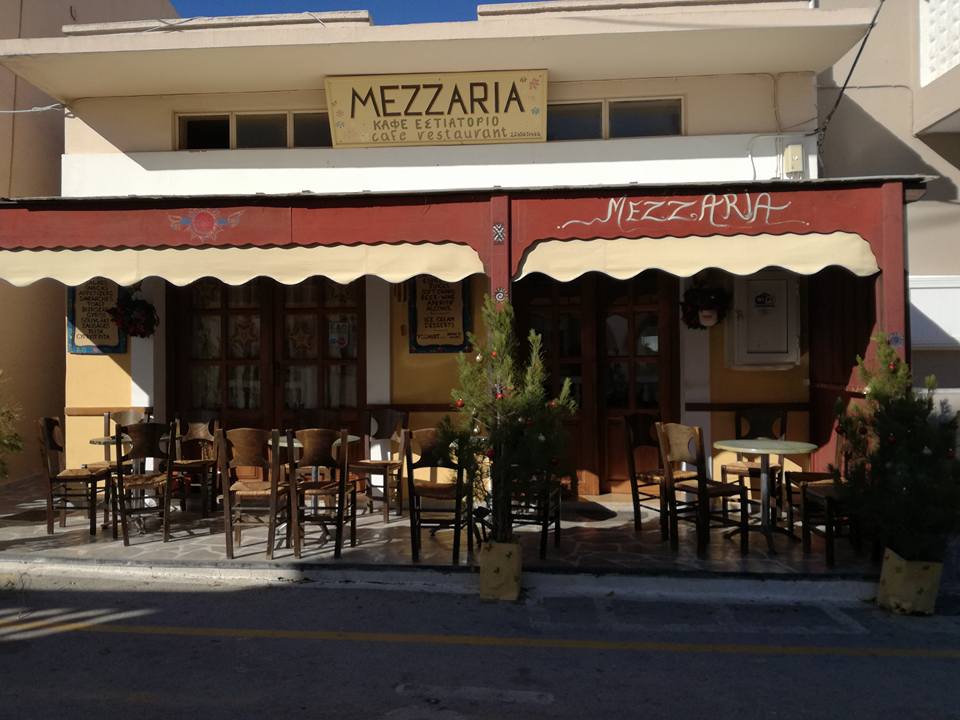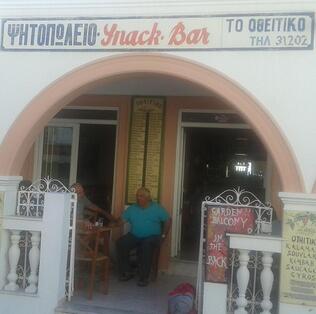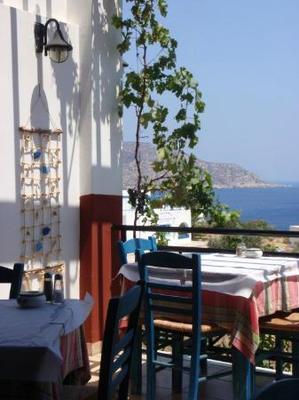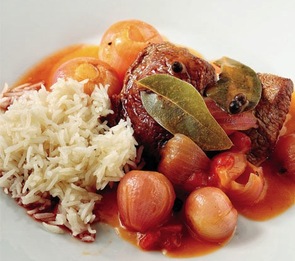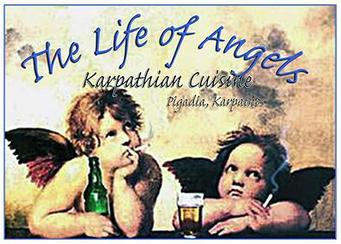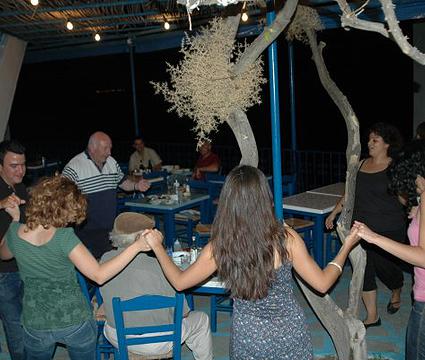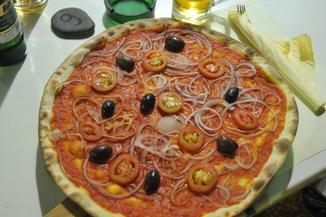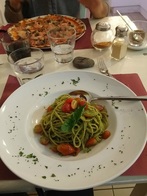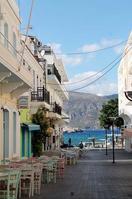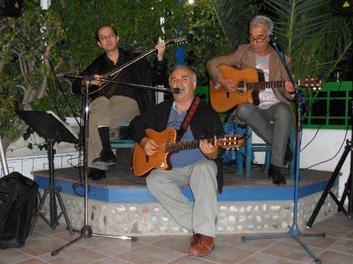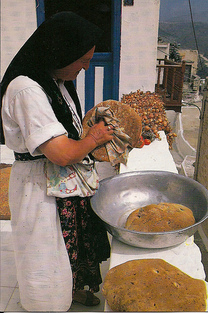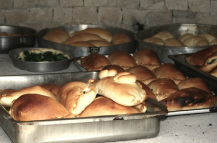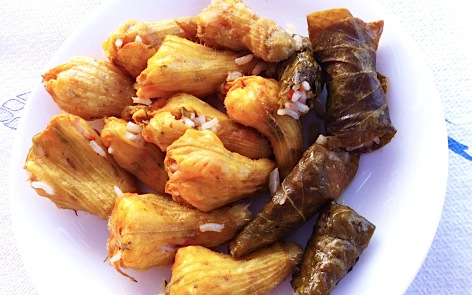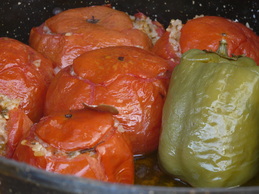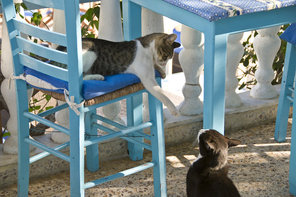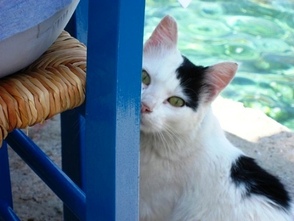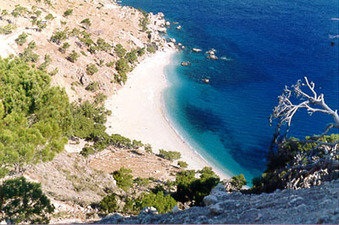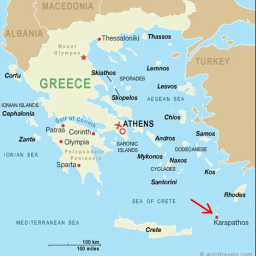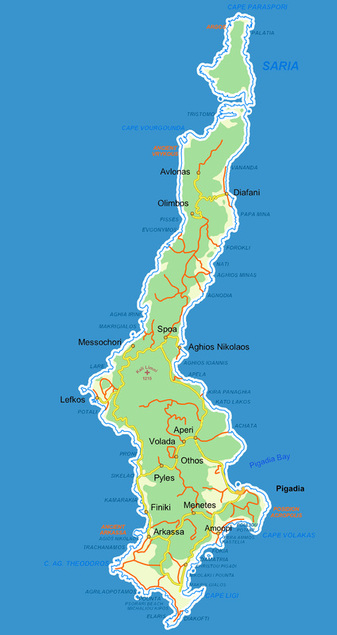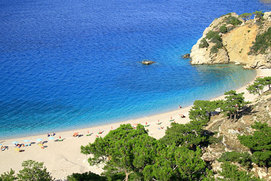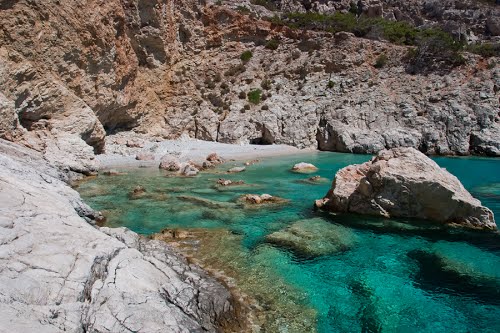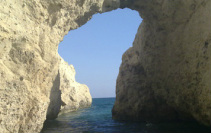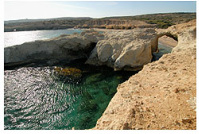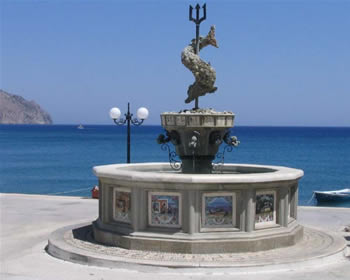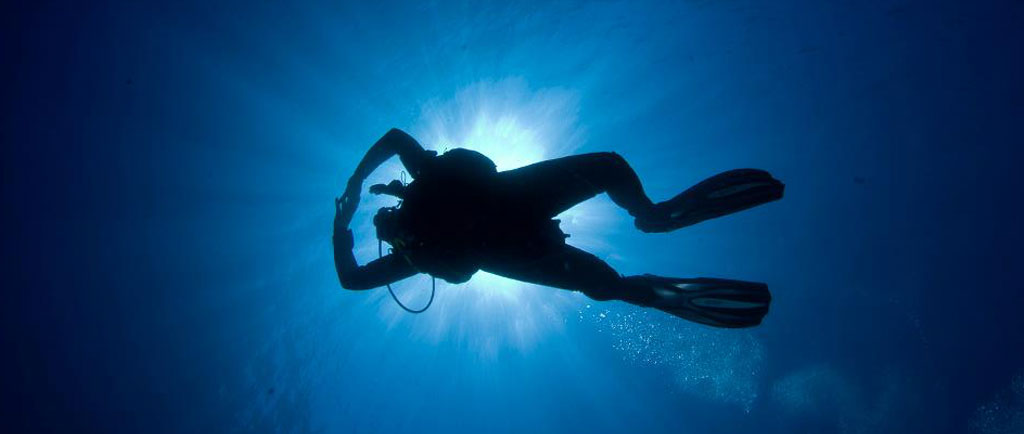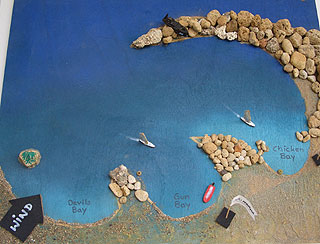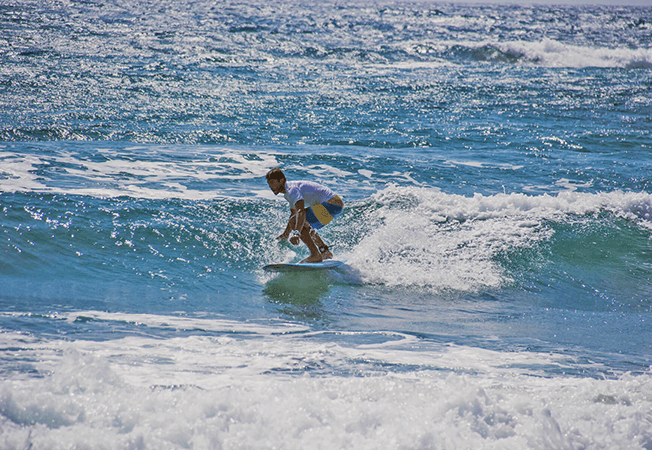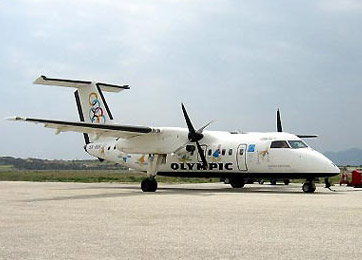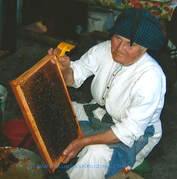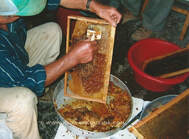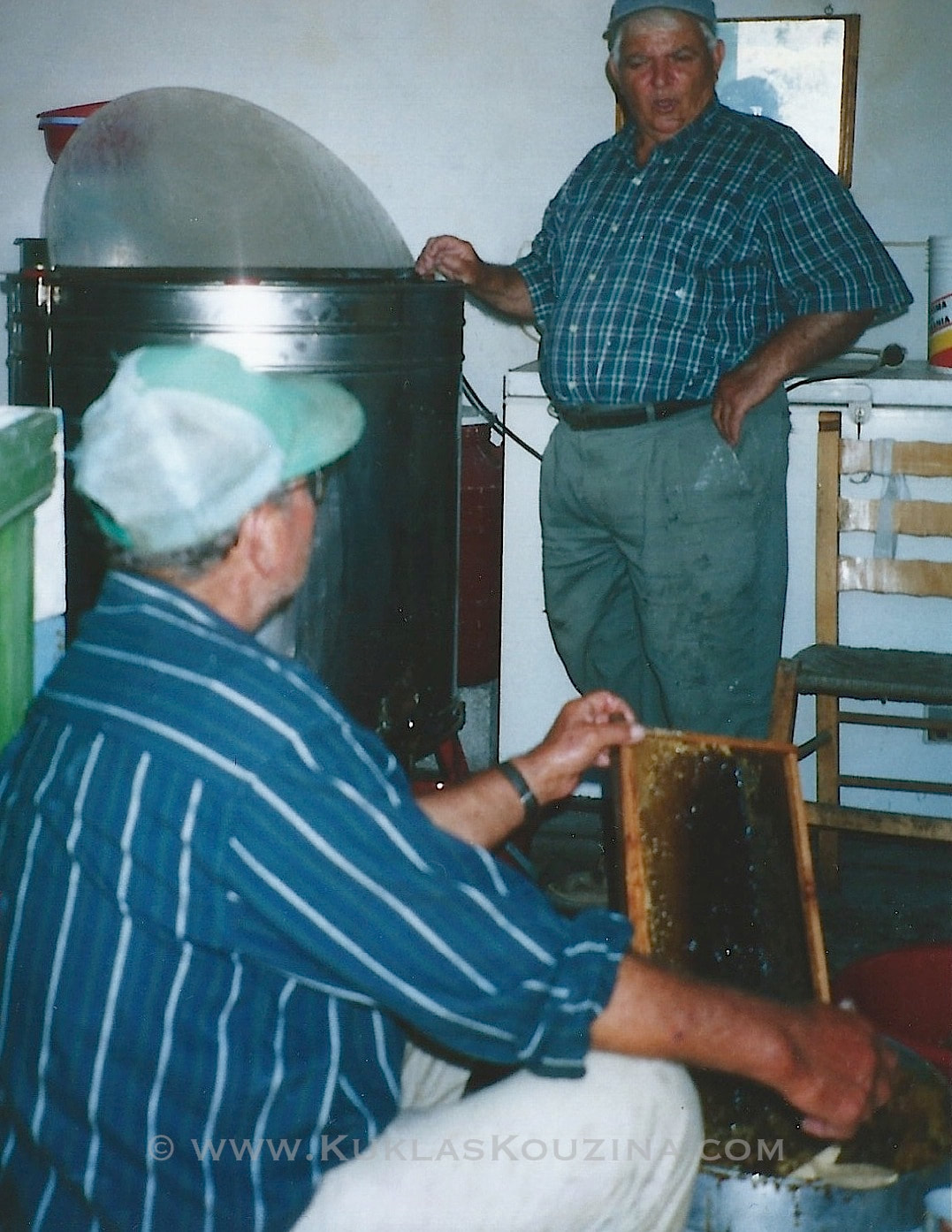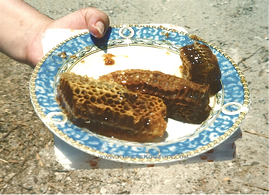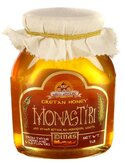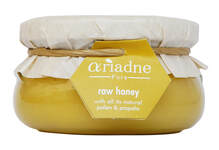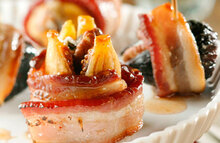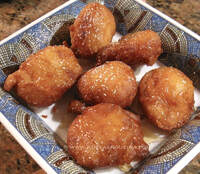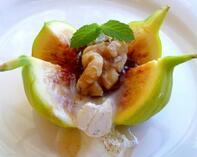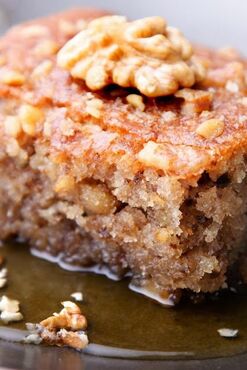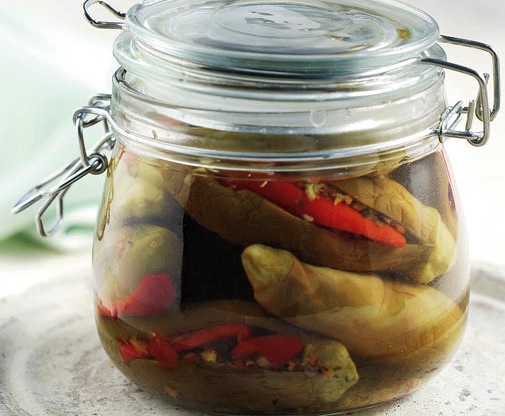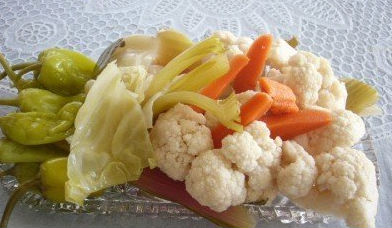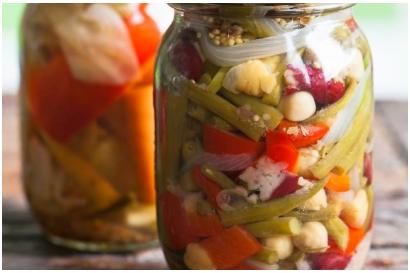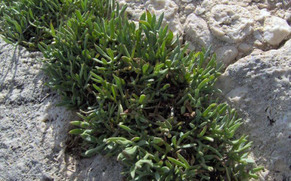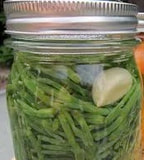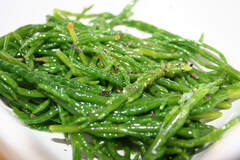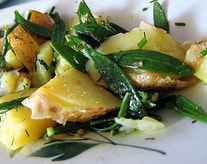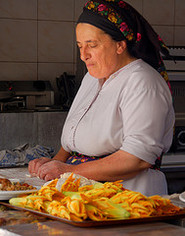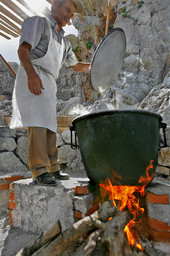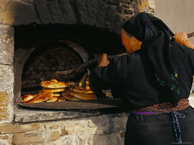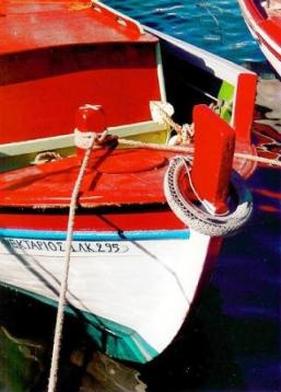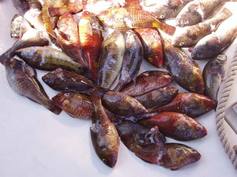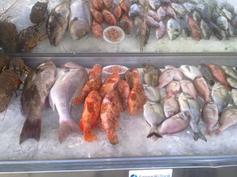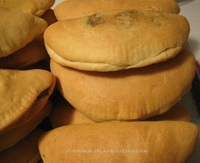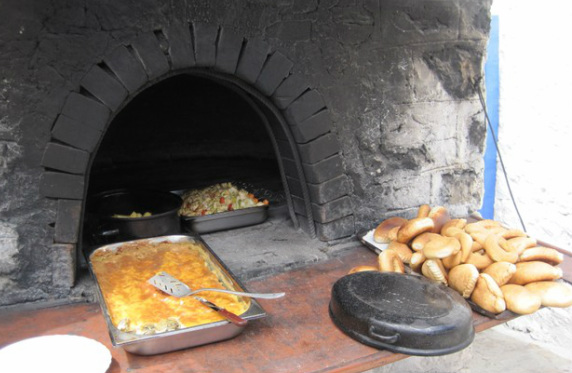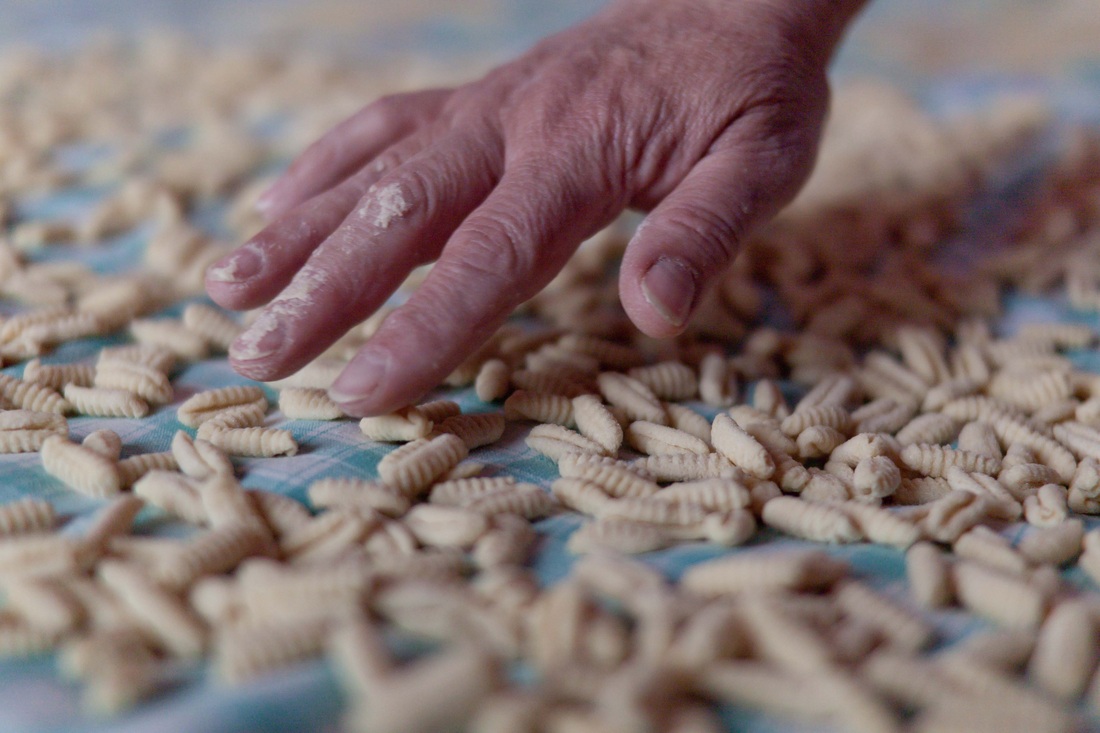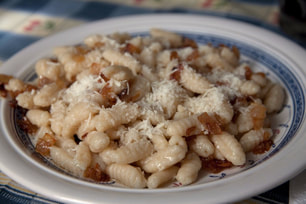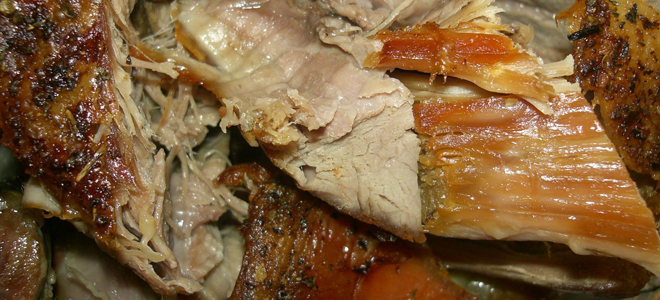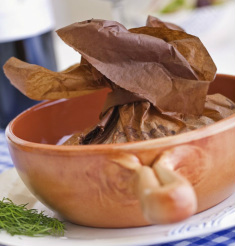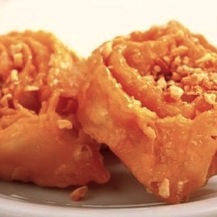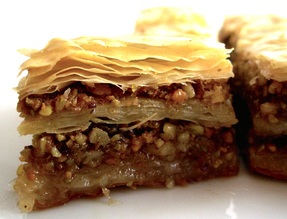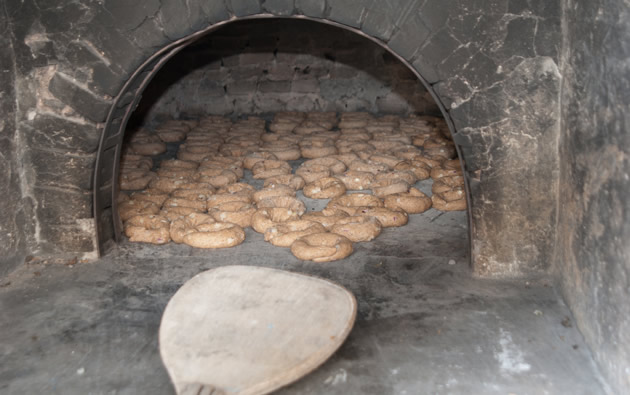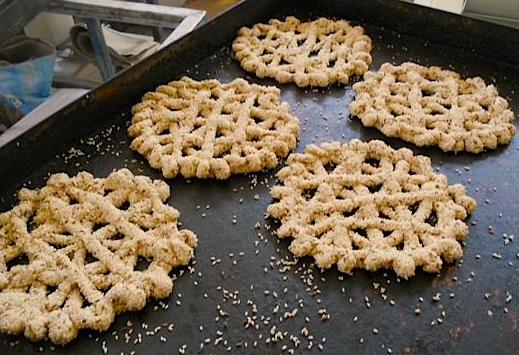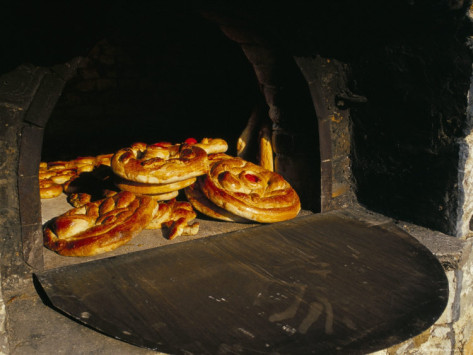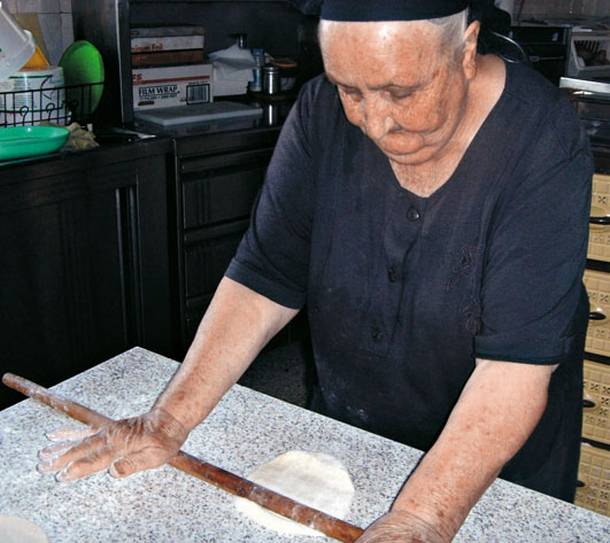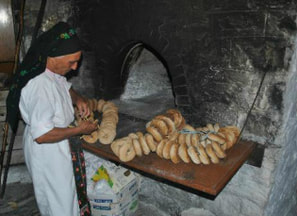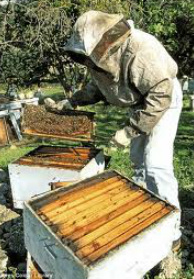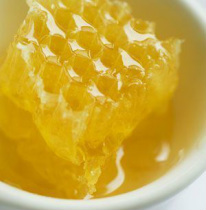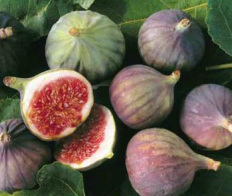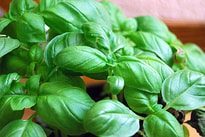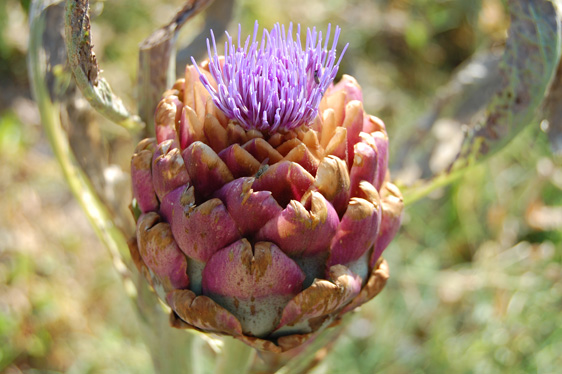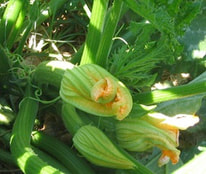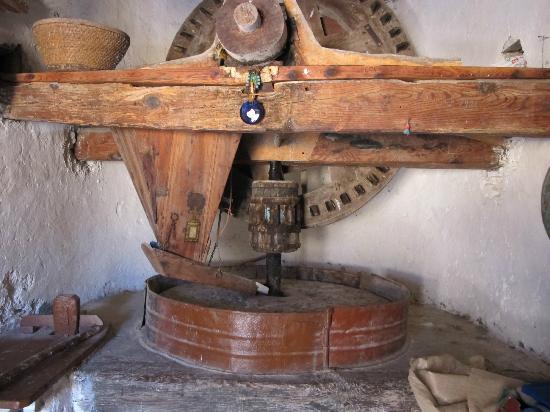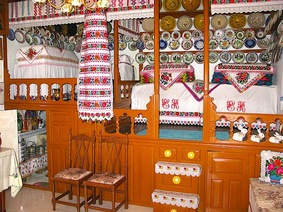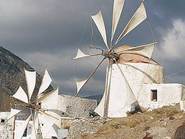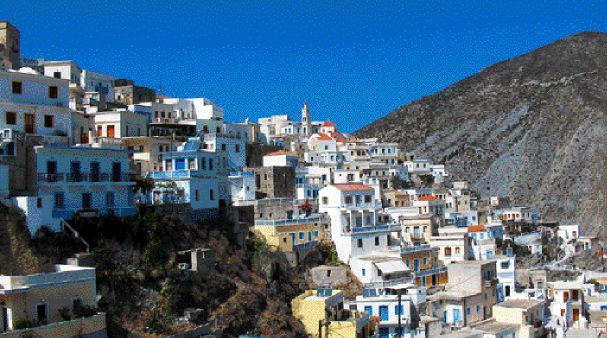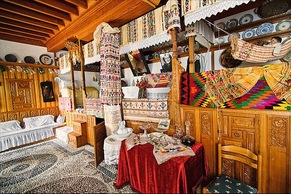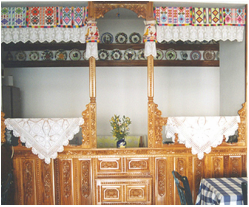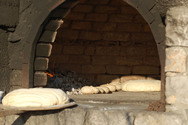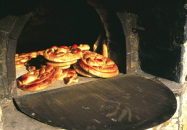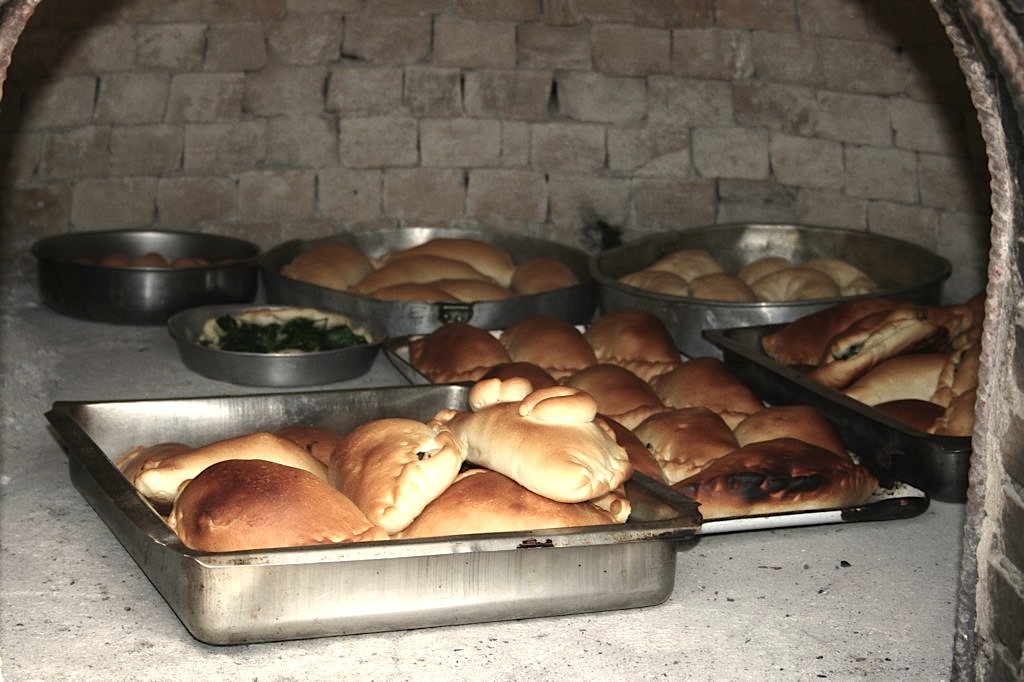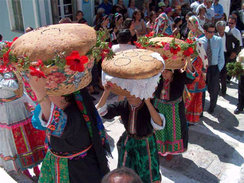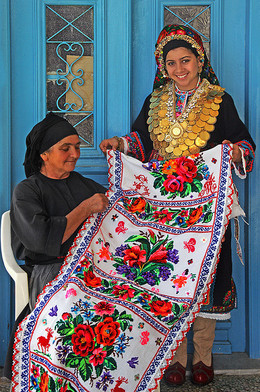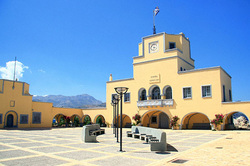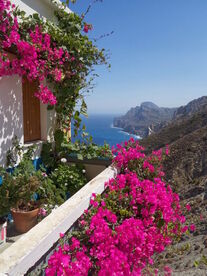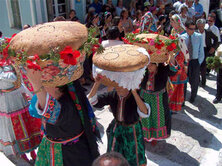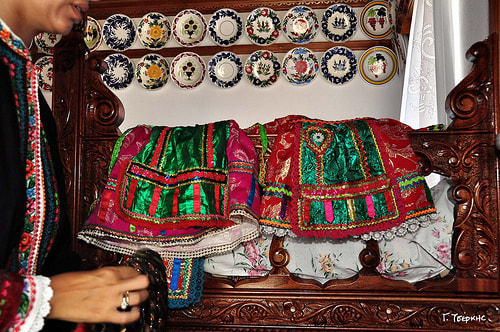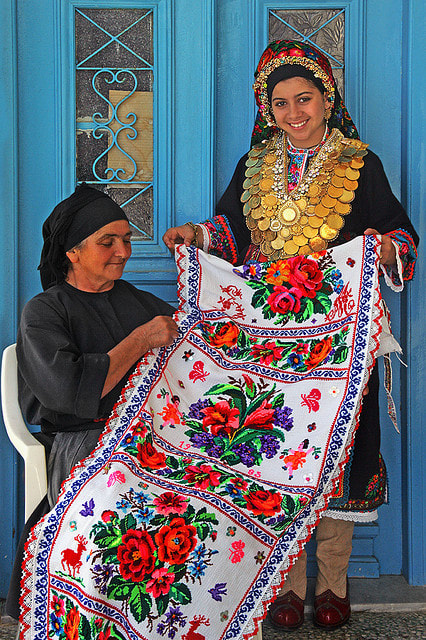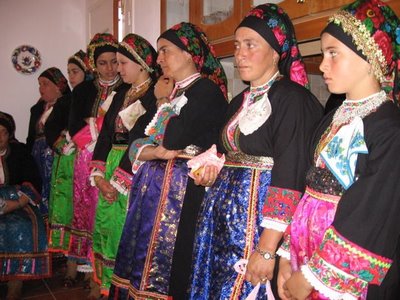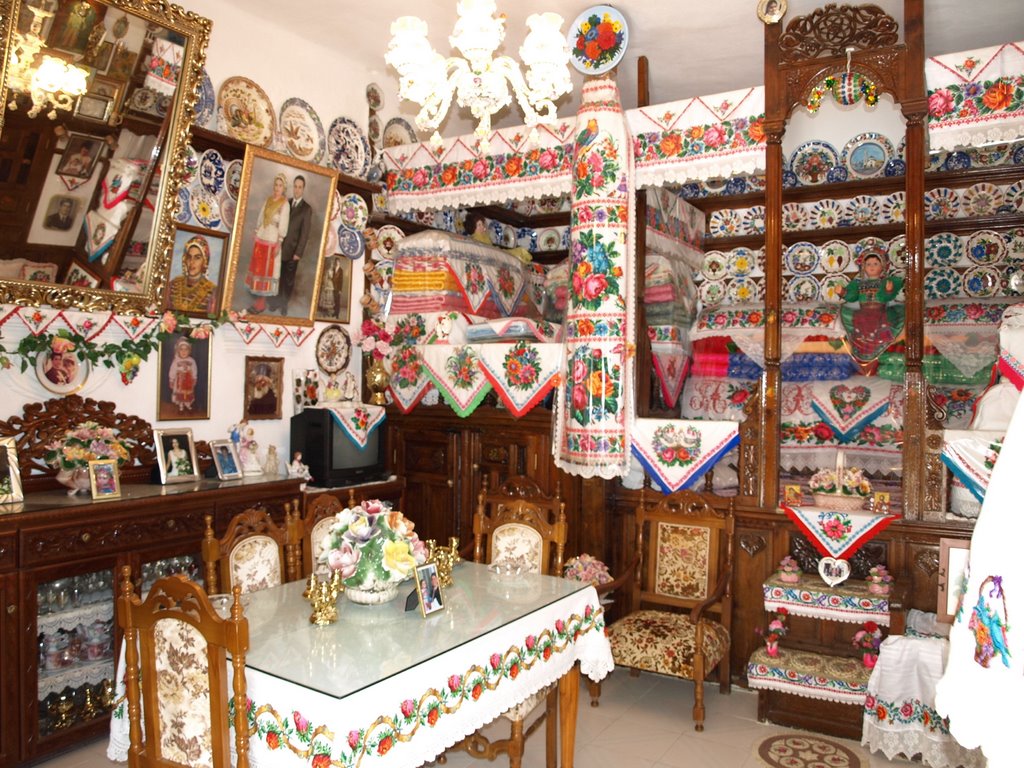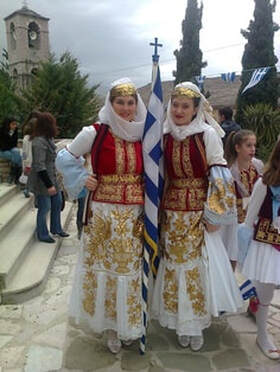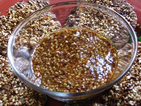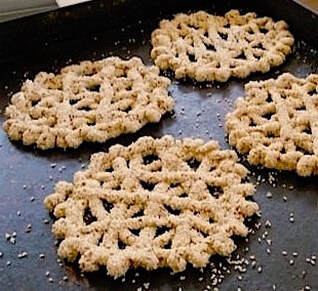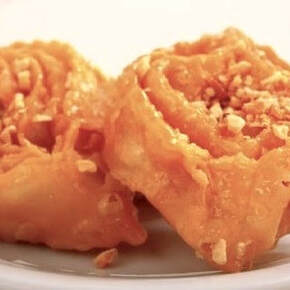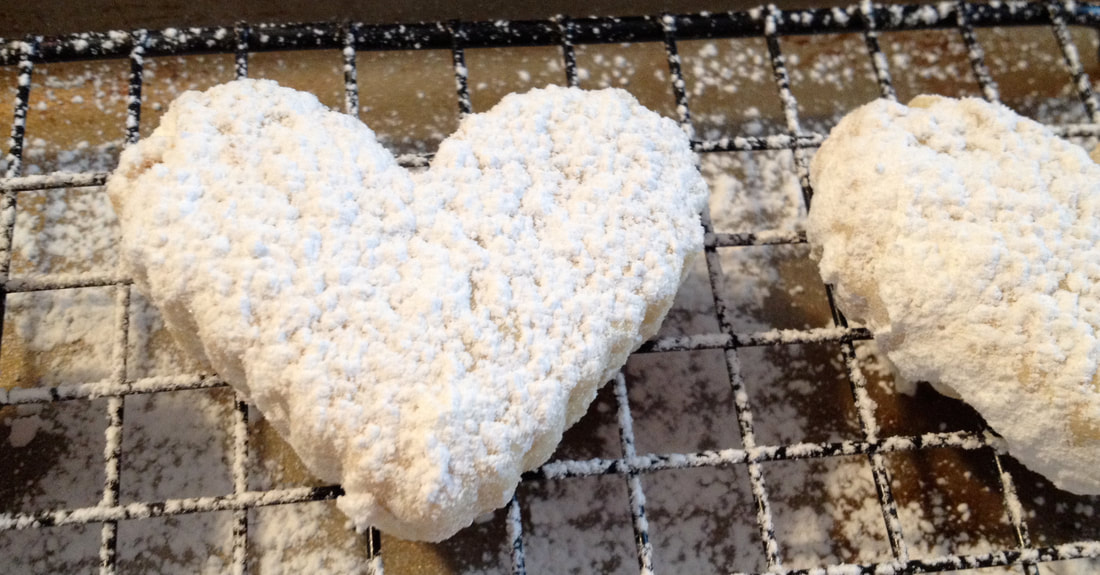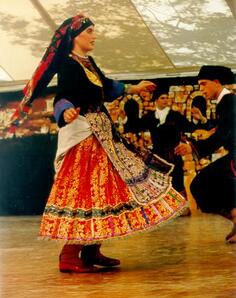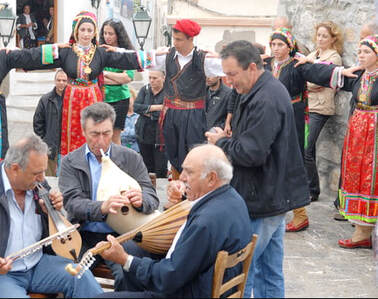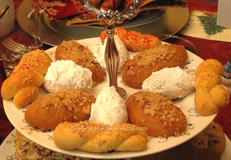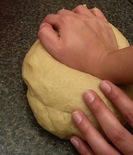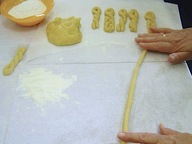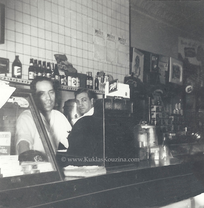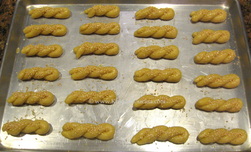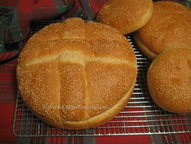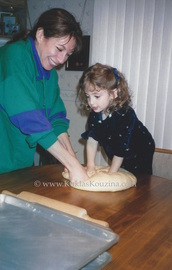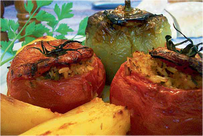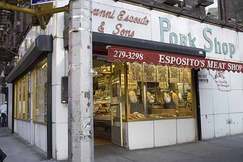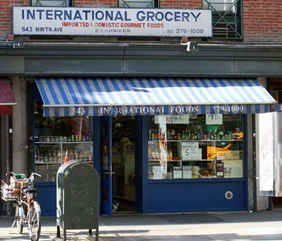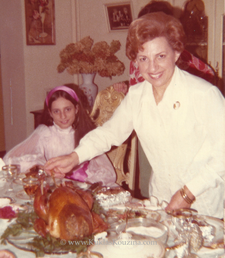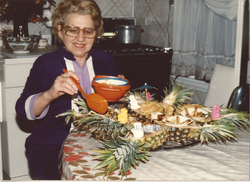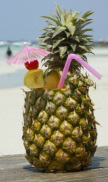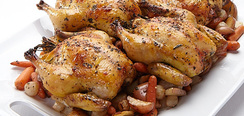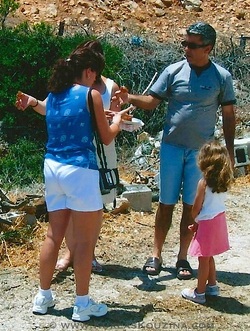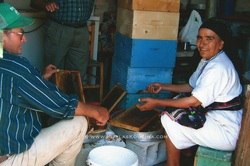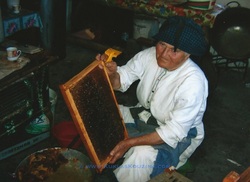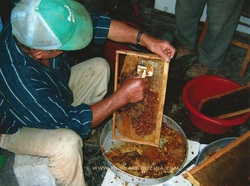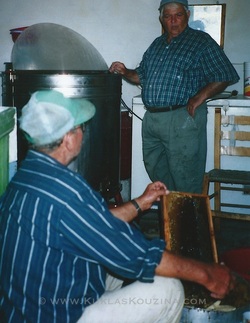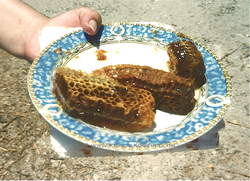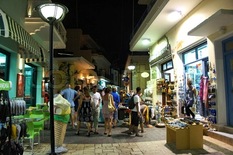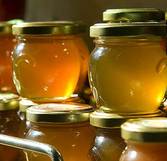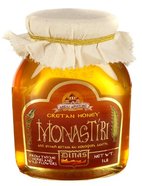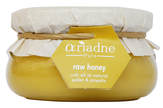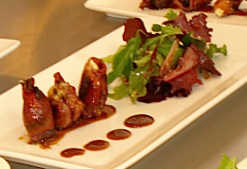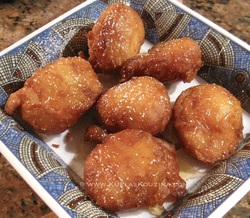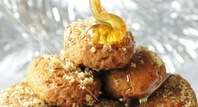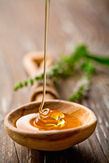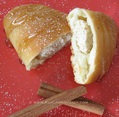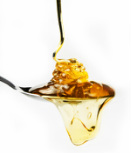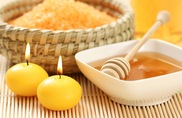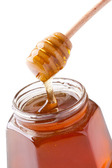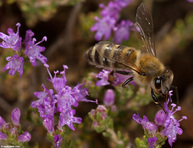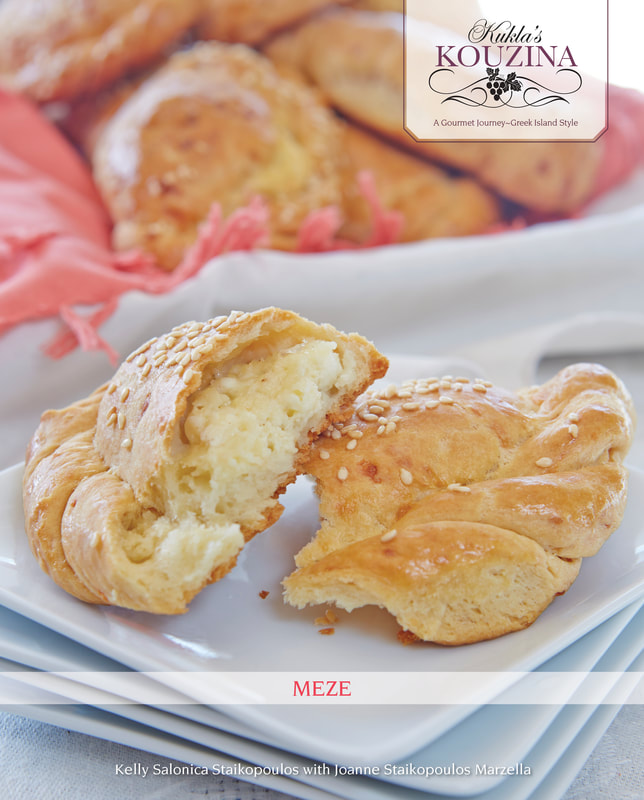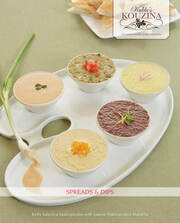Find Your Kefi !
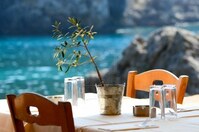
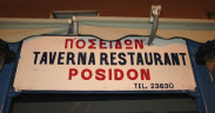
Show Me the Taverna!
So where do you eat in Karpathos when you visit? With over 70 restaurants and tavernas (or tavernes in Greek) throughout the island, you never have to eat at the same place twice…unless you really want to.
Most people will stroll through a town and see what catches their eye (or nose). You could be wandering downhill in Olympos in the late afternoon and spot tables set by the side of a windmill overlooking the sea. Your first thought is WOW, what an amazing spot to enjoy the local, rustic fare, have a glass of wine and watch the sun set over the water (this place actually does exist, read on for more details). You could be enjoying a day at the beach and, between swimming and sunbathing, you smell fresh fish cooking at the taverna overlooking the shore (lots of those). Suddenly you realize it’s lunchtime and that it doesn’t get more perfect than this…unless you throw in a Greek salad and some crusty bread. Eat a little, go for a swim, then eat some more. This is the good life, Greek-island style! |
Price guide: L (low), M (moderate)
La Gorgona, Diafani
Owner/chef: Gabriella (she’s from Genoa)
Menu: Greco-Italian fare Price: L-M Food: Delicious and beautifully presented. Cooking classes by Gabriella, upon request! House specialties: Gabriella's pasta, tarama, stuffed eggplant, zucchini fritters, eggplant salad, parmigiana, pestos, divine homemade tiramisu and Limoncello, the best cappuccino and espresso (mocha or macchiatto) on the island. Picnic sandwiches and pizza for the beach. Atmosphere/hospitality: Pretty setting, warm and gracious host, interesting people, very social and fun! View: Overlooks the Diafani fountain and breathtaking bay…a mini paradise! Music: Yes |
Taverna Perdika, Menetes
Owner/chef: Kostas Zavolas and his wife Sophia (their five daughters help out)
Menu: Local and traditional Greek fare Price: L Food: Delicious generous portions at very reasonable prices. House specialties: Tzatziki, dolmadakia, eggplant salad, local cheeses, gyro, makarounes, fried calamari (freshly caught by Kosta), moussaka…if it’s on the menu, it’s great! An ouzo and loukoumathes drizzled with thyme honey are complementary. Atmosphere/hospitality: Set in the mountains in a beautiful village, there’s a simple beauty to this taverna that’s very comfortable. The Spartan décor seems like a magical throwback to the island’s rustic beginnings. Very friendly and fun! Music: Yes |
Four Seasons Taverna, Amoopi
Owner/chef: Mike, George, and the entire Diakos family
Menu: Local and traditional Greek fare, as well as giant pizza. Price: L-M Food: Great food and service! House specialties: Delicious homemade onion bread served with olive spread, tender veal. An ouzo to start and small dessert (fruit or homemade cakes) for a sweet finish are complementary. Special drink: Try their "Ouzo-Orange" or "Bloody Ouzo." Atmosphere/hospitality: The welcoming Diakos family goes out of its way to make sure everyone has a special experience. A roof garden adds a relaxing, lovely place to sit and listen to music. View: Ideal view of Amoopi Bay from the terrace on the upper floor. For an unforgettable evening, go for an early dinner and watch the rising moon from the "balcony to the Aegean." Music: Yes |
Perama Maria Taverna, Amoopi
Owner/chef: Stamatis and Maria (a very friendly husband-and-wife team)
Menu: Traditional Greek fare prepared fresh daily. Check out the little yellow post-it note on the menu for the genuinely Greek dishes. Price: L-M Food: Maria has watched her family cook delicious food for over 25 years so you know what she cooks comes straight from her heart. You can put in a special request with Stamatis a day in advance and he’ll gather the ingredients the next morning and have your meal prepared for you that evening. House specialties: Oven-roasted lamb, goat kleftiko, moussaka, fresh fish soup, and shrimp saganaki. An ouzo and small dessert are complementary. Atmosphere/hospitality: Small, simple, and intimate, with about 15 tables. Quick and friendly service. Stamatis and Maria are there to make sure everyone is happy and enjoying the finest on the menu. Music: No |
Milos Taverna, Olympos
Owner/chef: Family owned along with the adjacent gristmill and outdoor wood-burning oven
Menu: Karpathian fare unique to Olympos. Not to be missed! Price: L Food: Completely local and fresh. Great value! House specialties: Kritamo toursi (fresh sea-greens salad), dolmathakia, stuffed zucchini blossoms, homemade bread, makarounes, lemony keftethes (lamb meatballs), kolokithokeftethes (zucchini patties), moussaka. Loukoumathes drizzled with thyme honey are complementary. Atmosphere/hospitality: Rustic, ancient, charming, and welcoming. View: A veranda that faces the valley on one side, and on the other, a terrace that overlooks the east coast of the island with breathtaking sea views. A great place to eat and watch the most spectacular sunset in the Aegean. Music: No |
|
Psarotaverna Dolphin, Finiki
Owner/chef: Nikos Kaoukakis and his family (they’re from Crete)
Menu: Local and traditional Greek fare, specializing in seafood Price: L-M Food: Great service and gorgeous fish. The owner and his brother have a fishing boat and go out every morning to make sure they have fresh daily specials. House specialties: This is a fish taverna featuring the best fish in Karpathos, if not all of Greece, so all things fish: Spaghetti with lobster, fried barbouni, tsipoura (sea bream), shrimp or mussels saganaki, hand-cut fries, fresh horta (wild greens sautéed with olive oil and garlic), Cretan raki (whiskey). Pagoto (ice cream) is complementary. Atmosphere/hospitality: Warm and very friendly. A cozy beach waits across the road for an afternoon siesta. This is a place where memories are made. View: Magnificent view of the charming bay of Finiki and the island of Kasos. Music: No |
I Kriti Taverna, Arkassa
Owner/chef: Victoria and Yanni
Menu: Local and traditional Greek fare Price: L-M Food: Delicious and beautifully prepared. Can accommodate vegetarians. House specialties: Oven-roasted lamb, makarounes, homemade pies and cakes. Atmosphere/hospitality: Warm and very friendly. Victoria speaks five languages and is happy to tell you about the history of the island. Music: No |
Under the Trees Taverna
|
|
Taverna Nina, Kastelia Lakki, Amoopi
Owner/chef: Ekizoglou family
Menu: Local and traditional Greek fare Price: L Food: Fresh ingredients, everything is homemade, genuine and organic House specialties: Stifado (rabbit, lamb, or beef stew with pearl onions), gyro, pork and lamb souvlaki, kleftiko, greek salad, crab salad, makarounes, octopus in vinager, moussaka, horta. An ouzo or wine and fresh melon are complementary. Atmosphere/hospitality: Friendly, funny brothers manage the taverna. Tollis Ekizoglou, the waiter, greets you with a smile, suggests the best dishes on the menu, and keeps you entertained with his stories. They also have a pool where you can swim and eat poolside. View: Terrace overlooks the beautiful bay of Lakki. Music: No |
The Life of Angels, Pigadia (Apodimion Karpathion 69)
About: More than 110 years old, The Life of Angels started out as a coffee shop for the men of the villages to gather, talk, enjoy a demitasse, play tavli (backgammon), and perform traditional Karpathian music. Built in 1830 by Zoedia Karavias, it remains a one-of-a-kind structure on the island.
Owners/chefs: Zoe Konstantinidis Frangos and her daughter Angeliki Frangos Menu: Greek, Mediterranean, and Vegetarian Price: M Food: Generous servings of locally sourced, organic produce and meats from Karpathos and Crete. Traditional Greek cuisine using family recipes passed down for generations. Zoe, the heart of the restaurant, made it her mission to support local farmers, feature vegetarian fare, and offer home-cooked foods (like she would to guests in her own home)—it’s no wonder this eatery is seriously popular with tourists. Cooking classes are offered during the day for customers who are interested in learning how to make a specific dish. House specialties: Fresh beef stifado and oven-baked Karpathian lamb. Atmosphere/hospitality: Welcoming family ambiance View: The best view of Pigadia bay. Music: Yes Mike’s Restaurant, Pigadia
Owner/chef: Manolis and Minas
Menu: Local and traditional Greek fare, as well as Italian dishes Price: L-M Food: Fresh vegetables and succulent meats. Raki and loukoumathes are complementary. House specialties: Moussaka, kleftiko, horta, grilled tsipoura alongside a legendary baked potato with a yogurt sauce. Atmosphere/hospitality: Friendly, quick, and attentive staff. View: Pigadia harbor or charming side-street. Music: No Al Porto, Pigadia
Menu: Italian
Price: L-M Food: Reviewers claim the pizza is like dining in Italy (for when you need a break from Greek food). Try the onion, tomato, and olive red pizza. House specialties: A variety of pizza and pasta dishes, including Pizza Crado with mascarpone cheese and a garden-fresh summertime spaghetti with tomato and pesto. Atmosphere/hospitality: Friendly and fun. View: Charming side street with Pigadia harbor partial view. Phone: +30 2245 022772 |
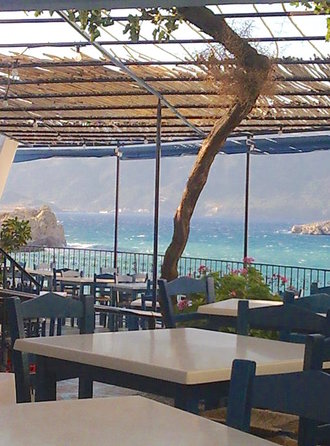
|
Pelagos, Pigadia
Owner/chef: Panaretos family
Menu: Local and traditional Greek fare Price: L Food: The food is average but Pelagos is actually popular for their live music, meze, and drinks. We suggest you come to Pelagos after dinner for traditional Greek bands, dancing, and a nightcap (or two). House specialties: Shrimp Saganaki, ouzo, Metaxa, cocktails Atmosphere/hospitality: Friendly and welcoming family. Slow food service but great music and a fun time. Music: Yes! It starts at 8:30pm and goes until midnight, featuring musicians like Konstantinos Maris, a brilliant lyra player. Then the traditional Karpathian three-piece acoustic group takes over and plays into the wee hours. If you want to try the local dances like the sousta, this is for you! |
|
|
Most Karpathian restaurants and tavernas have wonderful local dishes as well as traditional Greek fare. Their rustic round bread loaves, spanakopites, and pickled wild sea-fennel salad are to die for, but so are their souvlaki, dolmadakia, stuffed tomatoes, peppers, and zucchini flowers.
If you find yourself in an area with no clue as to which eatery is good, there’s one simple rule: When in doubt, follow your nose. Is the smell of the food like a Siren call? Is it shouting “Come, sit, EAT!”? Is the aroma making you suddenly ravenous and feeing weak in the knees? If you answered yes to any of these Qs, you have your answer. Add a stunning view (which is typical here but not necessary), good hospitality, and reasonable prices (most are!), and an ouzo or cold Mythos beer (which will make everything look and taste even better) and you have the makings of a meal fit for a Greek god…YOU! |
Kitty Kefi
|
Need a feline fix while you're on vacation? You'll have no trouble getting some 1-on-1 (or 1-on-12) on this island! Cats roam free in Karpathos, as they do all over Greece, and they’re everywhere! Like you, they love Greek food (this is their kefi!) so don’t be surprised if these irresistible creatures come to your table for a taste. They have a keen sense of smell, especially for fish, and love human company! (Some eateries would prefer not to have dozens of kitties flocking to their customers, so check with your waiter to see if it’s okay to feed them.)
|
Our new cookbooks Kukla’s Kouzina: A Gourmet Journey~Greek Island Style, Meze (Appetizers & Petite Plates) and Spreads & Dips are available on Amazon. These are the first two books in a series that we have developed and we’re excited to see this dream become reality! For details about the books and us, go to our BOOKS page. Meze and Spreads & Dips will complete their gourmet journey when they arrive in your home!
Sign up for our e-newsletter (if you haven’t already) and stay connected on social media for cooking tips and recipes, as well as for all Kukla's Kouzina updates and news.
Thanks for following us and we’ll see you next Monday!
Until then~
Kali orexi! Good appetite!
Kelly
Web design by Kelly Salonica Staikopoulos

